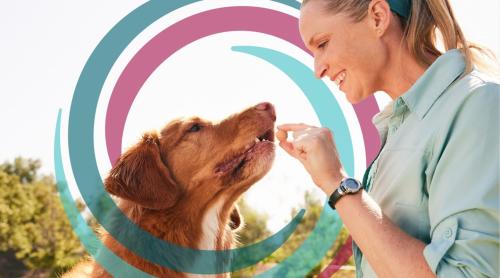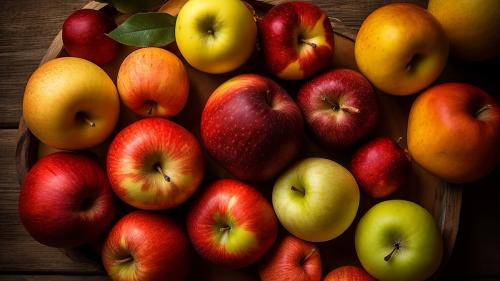
Our furry companions are often a part of our family, and as such, pet parents are frequently looking for ways to include healthy snacks into the diets of our pets. It is not uncommon for dog owners to wonder, “Can dogs safely eat apples?” if they have ever wondered this. There is a common question among dog lovers striving to provide their pets with treats that are both nutritious and enjoyable for their pets. Throughout this article, I will explore in depth the nutritional benefits and potential risks of feeding apples to dogs—all backed up with expert insights and a sprinkle of personal anecdotes—to help you make the right decision.
Expert Takeaways
- Yes, Dogs Can Eat Apples: Apples are safe and nutritious when served correctly.
- Avoid Seeds and Cores: Always core the apple to prevent cyanide exposure and choking.
- Moderation is Key: Stick to small portions to avoid excess sugar intake.
- Consult Your Vet: Always check with your veterinarian before introducing new foods.
Is it safe for dogs to eat apples?
There is no doubt that dogs can safely eat apples. The short answer is yes. In order to ensure their safety and health, there are some crucial considerations that should be kept in mind. It is important to note that apples are not only safe, but they are also a great source of vitamins, fiber, and antioxidants. Even so, there are some parts of the apple that should be avoided, such as seeds and cores.
Here is everything you need to know about preparing this dish, from nutritional facts to preparation tips.
Nutritional Benefits of Apples for Dogs
1. Packed with Vitamins
Apples are a great source of essential vitamins:
- Vitamin A: Promotes good vision, healthy skin, and immune function.
- Vitamin C: Supports immune health and tissue repair.
- Vitamin K: Aids in blood clotting and bone health.
Expert Insight:
“Apples are particularly beneficial for senior dogs, as their antioxidants can help reduce inflammation and promote joint health,” explains Dr. Jessica Fields, a veterinary nutritionist.
2. High in Dietary Fiber
Fiber is vital for a dog’s digestive health. Apples contain soluble and insoluble fiber, which can:
- Regulate bowel movements.
- Support gut health.
- Prevent constipation.
Personal Note:
I first discovered the digestive benefits of apples when my Labrador, Max, had an upset stomach. A few small apple slices (peeled) worked wonders in restoring his appetite and regularity.
3. Low in Calories
For dogs prone to weight gain, apples serve as a guilt-free snack. A medium apple contains approximately 95 calories, making it a healthy alternative to calorie-dense treats.
Are There Risks to Feeding Apples to Dogs?
While apples are safe in moderation, there are some risks you need to know about.
1. Apple Seeds Contain Cyanide
Apple seeds contain amygdalin, a compound that releases cyanide when metabolized. Even though a few seeds may not cause immediate harm, regular ingestion can pose long-term risks.
Quick Tip: Always core the apple and remove all seeds before feeding.
2. Potential Choking Hazard
The apple core and large chunks can be a choking hazard, especially for smaller dogs. Always slice the apple into small, manageable pieces.
Pro Tip: Use a dog-safe apple slicer or chop apples into bite-sized pieces.
3. High Sugar Content
While natural sugars in apples are healthier than refined sugars, they can still lead to weight gain or blood sugar spikes in dogs with diabetes.
How to Serve Apples to Your Dog Safely
Here are some preparation methods to make apples a safe and delicious treat.
1. Wash Thoroughly
Always wash apples to remove pesticides or wax. Opt for organic apples when possible.
2. Peel for Sensitive Stomachs
If your dog is new to apples or has a sensitive stomach, peel the apple to reduce fiber content.
3. Portion Control
Moderation is key. A few slices a day are sufficient for most dogs.
4. Creative Serving Ideas
- Frozen Apple Cubes: A refreshing treat for hot days.
- Apple Peanut Butter Mix: Spread unsweetened peanut butter on slices for added flavor.
- Apple Puree: Ideal for older dogs or those with dental issues.
Apples and Dog Breeds: What to Consider
Certain dog breeds have unique dietary needs. Here’s a quick table to guide you:
| Dog Breed | Recommendation |
|---|---|
| Small Breeds | Serve finely chopped apple pieces. |
| Medium Breeds | A few slices per serving are ideal. |
| Large Breeds | Larger portions, but no more than half an apple. |
| Diabetic Dogs | Consult your vet before introducing apples. |
Real-Life Reviews From Pet Owners
Bella’s Journey With Apples
Bella, a Golden Retriever, struggled with weight gain. Her owner, Linda, switched her high-calorie treats to apple slices. Within three months, Bella lost 5 pounds and showed increased energy.
Max the Apple Lover
Max, a senior Beagle, benefited from apples as part of his arthritis management plan. His owner noticed reduced stiffness after incorporating apples into his diet twice weekly.
Frequently Asked Questions
1. Can Puppies Eat Apples?
Yes, puppies can eat apples, but start with small quantities to ensure they tolerate the fruit well.
2. Can Dogs Eat Apple Peels?
Yes, but dogs with sensitive stomachs may find peels difficult to digest.
3. Are There Apple Varieties Dogs Should Avoid?
Avoid sour or overly acidic varieties like Granny Smith, as they can upset your dog’s stomach.
4. How Often Can I Feed Apples to My Dog?
2-3 times a week is sufficient for most dogs. Adjust based on your dog’s size and dietary needs.
In addition to the fruits mentioned above, what other fruits are safe for dogs?
The following is a list of fruit that is safe for dogs to eat in addition to apples:
-
Apples
-
Apricots
-
Bananas
-
Blueberries
-
Cantaloupes
-
Cranberries
-
Mango
-
Orange
-
Pear
-
Pineapple
-
Raspberries
-
Strawberries
Is there anything I should avoid giving my dog when it comes to fruits?
There are some fruits that are not safe for dogs, so make sure you don’t give your dog any of these fruits on this list:
-
Cherries
-
Grapes
-
Raisins
-
Lemons
-
Limes
-
Grapefruit
-
Persimmons
Final Thoughts
Incorporating apples into your dog’s diet can be a rewarding experience for both you and your furry friend. Not only do apples provide essential nutrients, but they also offer a delicious and low-calorie treat option. However, always prioritize safety by removing seeds and cores, sticking to moderation, and consulting your veterinarian if in doubt.
Remember, our pets rely on us to make informed decisions about their health and well-being. So go ahead—grab an apple, slice it up, and share this nutritious snack with your canine companion!
For more information, check out resources from American Kennel Club, PetMD, and ASPCA.


Leave a Reply